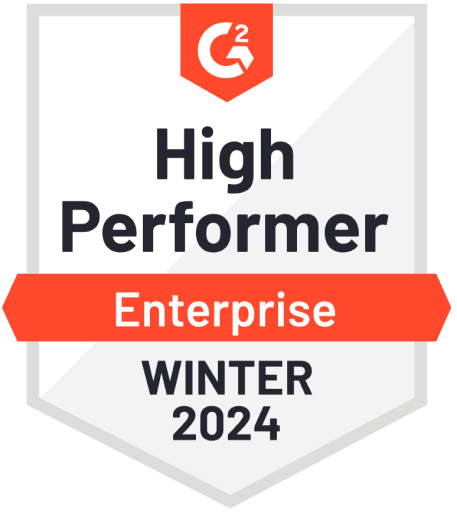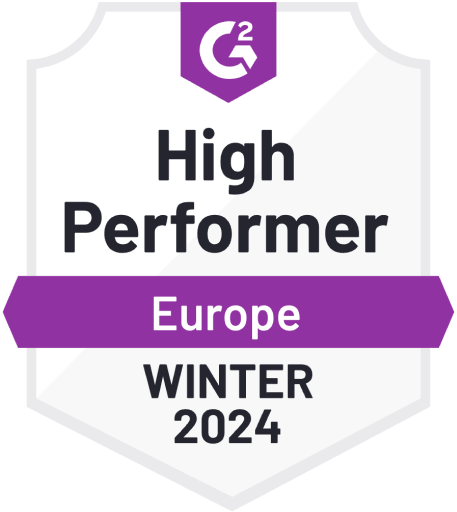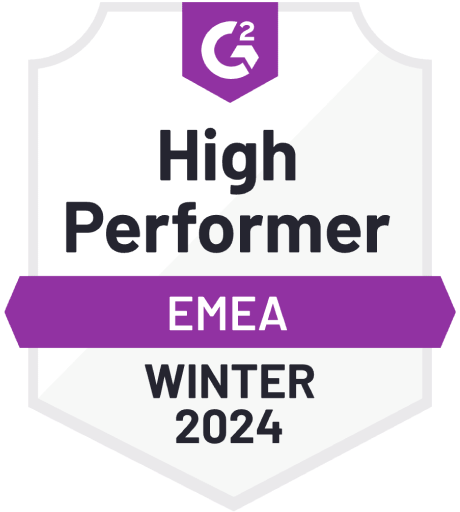20 best practices on how to improve the Procure-to-Pay process
10 minutes read
Published on 28-06-2024
20 expert-backed best practice tips: How your business can improve its Procure-to-Pay (P2P) process
Procure-to-Pay (P2P) processes are integral to a business's financial health, encompassing everything from the initial request for goods and services to the final payment to suppliers. In today's competitive landscape, optimizing this cycle is crucial for efficiency, cost savings, and overall operational success.
High inflation, banking crises, and geopolitical conflicts created significant uncertainty. These factors emphasize the importance of efficient financial management for CFOs.
This guide covers 20 expert-backed best practices to enhance your P2P process, leveraging technology and strategic management.
Steps within the Procure-to-Pay cycle
Optimizing your P2P process starts with understanding each step in the cycle. Here’s a brief overview:
- Identify Needs for Goods and Services: Determine what your business requires, ensuring that all requests align with operational goals and budget constraints.
- Create and Approve Purchase Requisition: Formalize requests for goods or services. Ensure that these requisitions are reviewed and approved by the appropriate stakeholders.
- Create and Approve Purchase Order: Convert approved requisitions into purchase orders. This step formalizes the agreement with suppliers. Additional review and authorization of the purchase order by the business ensures accuracy and compliance.
- Receive Goods or Services from Supplier: Confirm that the received goods or services match the purchase order specifications.
- Receive Invoice from Supplier/Vendor: Collect and review invoices from suppliers, ensuring they correspond with received goods or services (i.e., price, quantity, etc,).
- Approve and Match Invoice to Purchase Order and Goods Receipt: Perform a three-way match to verify that the purchase order, goods receipt, and invoice all align.
- Post for Vendor Payment through AP: Process the invoice for payment, ensuring timely and accurate disbursement to suppliers.
- Reporting: Track supplier performance and compliance through detailed reporting, helping to identify areas for improvement.
Challenges within the Procure-to-Pay process
- Multiple Teams and Phases: Coordination across different teams using various platforms can lead to inefficiencies and miscommunication.
- Errors and Mistakes: Manual processes are prone to human errors, leading to inaccuracies in orders, invoices, and payments.
- Manual Processing Time: Manual steps are time-consuming and can delay the entire cycle.
- Supplier Management: Maintaining accurate supplier data and managing relationships can be challenging without proper tools.
- Policy and Compliance: Ensuring compliance with internal policies and external regulations requires rigorous controls.
- Delayed Approvals and Payments: Manual approval processes can cause significant delays.
- Visibility and Control: SAP embedded solutions are necessary to maintain global visibility and control, accuracy of supplier data and complete tracking of exceptions and payments.
- Department Communications/Siloed: Lack of communication between departments can lead to silos, reducing efficiency and effectiveness.
20 Procure-to-Pay best practices
To overcome these challenges and optimize your P2P cycle, consider implementing the following best practices:
1. Documented Processes: Clearly document all P2P processes to ensure consistency and compliance.
2. Approval Process with Standardization: Standardize approval processes to streamline operations and reduce bottlenecks.
3. Budget Review through Finance or Procurement: Ensure all purchases are reviewed and approved within budget constraints.
4. Strategic Sourcing Program: Identify and engage with the best suppliers through strategic sourcing.
5. Negotiating and Contract Prerequisites: Establish clear negotiation and contract prerequisites for each purchase.
6. Purchase Order Review and Shipment Reconciliation: Regularly review purchase orders and reconcile shipments to avoid discrepancies.
7. Centralized Vendor Payment and Contract Management: Streamline vendor payments and manage contracts from a central system.
8. Automation with Software and Technology: Leverage automation and advanced technologies to improve efficiency
9. Aim for Real-Time Visibility: Ensure real-time visibility into the P2P process for better decision-making.
10. Optimize AP within the Broader P2P Cycle: Integrate AP functions to enhance the overall P2P cycle.
11. Improve Supplier Relationships/Engagement: Foster strong relationships with suppliers to improve collaboration and performance.
12. Monitor and Analyze KPIs: Use data to track performance and identify areas for improvement.
13. Provide Full Transparency: Ensure transparency across the P2P cycle to build trust and accountability.
14. Optimize Inventory Management: Maintain optimal inventory levels to meet demand without overstocking.
15. Promote Cross-Department Collaboration: Encourage collaboration between departments to enhance the P2P process.
16. Integrate with ERP and Internal Accounting Systems: Ensure seamless integration with existing systems for better data flow and accuracy.
17. Vendor Relationship Management: Actively manage vendor relationships to ensure compliance and performance.
18. Policy and Compliance Management: Implement robust policies and compliance management to mitigate risks.
19. Training and Development: Provide ongoing training for staff on new tools and systems.
20. Set Goals and KPIs: Establish clear goals and KPIs to measure success and drive continuous improvement.
Benefits Achieved within Procure-to-Pay through Invoice-to-Pay automation software
Automation offers numerous benefits across the P2P cycle, each contributing to a more efficient and effective process:
Better efficiency around the Invoice-to-Pay (I2P) process
Invoice-to-Pay automation streamlines various tasks, reducing the time and effort needed for manual processes. Automated workflows ensure that each step, from purchase requisition to payment, is handled quickly and accurately. This efficiency frees up valuable resources, allowing your team to focus on strategic activities rather than routine administrative tasks, ultimately improving overall productivity.
Purchase requisition, Purchase approvals, and purchase order creation done within software
Automated systems handle the entire purchase process within a single platform. This integration ensures that purchase requisitions are approved promptly, purchase orders are generated accurately, and all documentation is consistent. By consolidating these tasks into one system, businesses can reduce errors, speed up the approval process, and maintain better records for future audits and reviews.
Easier delivery tracking and reconciliation
Automation provides real-time tracking of deliveries and seamless reconciliation with purchase orders. This visibility ensures that any discrepancies between orders and deliveries are identified and resolved quickly. Automated alerts and updates keep all stakeholders informed, reducing the risk of lost or mismanaged deliveries and ensuring that inventory levels are always accurate.
Three-way invoice matching
Three-way matching involves comparing the purchase order, goods receipt, and invoice to ensure accuracy before payment. Manually, this process is time-consuming and prone to errors. Automation can achieve over 99% accuracy, reducing discrepancies and streamlining approvals.
Invoice process automation
Automating invoice processing, including approval and exception handling workflows, eliminates bottlenecks, reduces the chance of errors and accelerates payment cycles. This results in faster, more accurate payments and improved supplier relationships.
AI and ML technology to enhance automation and accuracy
Artificial Intelligence (AI) and Machine Learning (ML) technologies analyze and process data more accurately and quickly than manual methods. These technologies can predict trends, detect anomalies, and continuously improve the P2P process through learning algorithms. This results in more accurate data processing, better decision-making, and ongoing optimization of the P2P cycle.
OCR and AI-enabled digital capture technology
Optical Character Recognition (OCR) and AI-enabled digital capture technology automate the extraction of data from invoices and other documents. This reduces manual data entry errors and speeds up processing times, leading to a up to 65% cost reduction in AP processing.
Supplier lifecycle and digital vendor management
Automation facilitates comprehensive supplier lifecycle management, from onboarding to performance monitoring. Digital vendor management systems track supplier performance, compliance, and relationship health. This ensures that your business engages with reliable suppliers, maintains strong relationships, and addresses any issues proactively, leading to better supplier collaboration and performance.
Increased visibility and real-time reporting
Real-time reporting and analytics provide instant insights into every aspect of the P2P process. Automated systems collect and analyze data continuously, offering detailed reports that help identify inefficiencies, track performance, and inform strategic decisions. This enhanced visibility ensures that you can respond to issues promptly and optimize the P2P process continuously.
Better collaboration between procurement and AP
Automation bridges the gap between procurement and accounts payable (AP) by integrating their workflows. This integration ensures that both departments have access to the same data and insights, fostering better communication and collaboration. Improved collaboration leads to more cohesive strategies, smoother operations, and fewer errors or delays in the P2P process.
Integrate with your ERP
Seamless integration with your ERP system ensures that all P2P activities are aligned with your overall business processes. This integration eliminates data silos, improves data accuracy, and ensures that financial and operational data are consistent across the organization. It simplifies reporting, enhances compliance, and provides a unified view of business performance.
CSR and sustainability (paperless)
P2P automation supports corporate social responsibility (CSR) initiatives by reducing the need for paper-based processes. Digital documents and automated workflows minimize paper usage, contributing to sustainability goals. This not only helps the environment but also reduces costs associated with printing, storage, and document handling.
Higher levels of compliance, security, and transparency
Automated P2P systems ensure that all processes comply with internal policies and external regulations. They provide a clear audit trail, enhance data security, and offer transparency into every transaction. This reduces the risk of fraud, ensures compliance with legal requirements, and builds trust with stakeholders by demonstrating accountability and control.
Less manual workflows (better accuracy and team productivity)
By automating repetitive tasks, P2P systems reduce the burden of manual workflows. This not only minimizes the risk of errors but also increases the productivity of your team. Employees can focus on high-value activities, such as strategic planning and supplier relationship management, leading to improved job satisfaction and better business outcomes.
Easier management of POs
Automated systems streamline the creation, approval, and tracking of purchase orders (POs). This simplifies PO management, ensures that orders are processed correctly, and provides visibility into the status of all POs. Automation reduces delays, prevents lost orders, and ensures that goods and services are procured efficiently and in a timely manner.
The best way to optimize your Procure-to-Pay cycle using Serrala Invoice-to-Pay automation software
Serrala offers comprehensive P2P automation solutions that integrate seamlessly with your existing ERP and internal accounting systems. Our cloud-based platform utilizes Robotic Process Automation (RPA), Artificial Intelligence (AI) and Machine Learning (ML) to enhance accuracy and efficiency. Key features include automated three-way matching, AI-powered digital capturing technology for invoice processing, and advanced analytics for real-time reporting. With Serrala, you can achieve a best-in-class P2P process, driving cost savings, improved supplier relationships, and greater overall efficiency.
Explore the Advantages of Serrala Invoice to Pay Solutions
- Seamless invoice-to-pay solutions that can be embedded in SAP, in the cloud, or in a hybrid environment and combined with a holistic SaaS offering
- Highly adaptable to meet individual customer requirements (i.e., process flexibility, deep accounting integration, etc.) to maximize business impacts and customer benefits
- High satisfaction rate with 100+ active customers in Invoice-to-Pay globally, e.g. processing thousands of invoices and payments every day
- Powered by artificial intelligence and machine learning functionalities, Serrala solutions for invoice-to-pay continue to grow and evolve
Learn more abour Serrala Invoice to Pay automation solutions: Unlock Multiple Benefits in Your Business with Serrala Procure to Pay (P2P) Software
FAQs
1. What is a P2P end-to-end cycle?
A P2P (Procure-to-Pay) end-to-end cycle encompasses the entire process from identifying a need for goods or services to paying the supplier for those goods or services. It begins with requisitioning and sourcing, continues through procurement and receiving, and concludes with invoicing and payment. This cycle ensures that an organization can efficiently manage procurement activities, control expenses, and maintain strong supplier relationships.
2. What is the best way a P2P process can be improved?
Improving the P2P process can be achieved through automation and integration. Implementing a robust P2P software solution streamlines workflows, reduces manual errors, and ensures compliance. Enhancing supplier relationships through effective communication and performance metrics also boosts efficiency. Regularly reviewing and updating procurement policies, training staff, and leveraging data analytics for informed decision-making are crucial for continuous improvement.
3. What are the main KPIs to evaluate P2P performance?
Key Performance Indicators (KPIs) for evaluating P2P performance include:
• Time it takes to complete a purchase order
• Average cost of completing a purchase order
• Time to market
• Processing time for electronic POs
• Time it takes to process an invoice
• Average invoice processing cost
• Rate of invoice exceptions
• Rate of first-time matches
• Time it takes to approve an invoice on average
• Days Payable Outstanding (DPO)
• Spend Management
• Savings realized
• Discounts taken
4. What is 3-way matching within P2P?
Three-way matching is a process within P2P that ensures accuracy and legitimacy before payment is made. It involves comparing three documents: the purchase order (PO), the receiving report (goods receipt), and the supplier’s invoice. The match confirms that the order details, quantities received, and invoiced amounts are consistent, thereby preventing overpayments, fraud, and discrepancies
5. Is OTC a part of P2P?
Order-to-Cash (OTC) is not a part of Procure-to-Pay (P2P). OTC focuses on the sales side of a business, encompassing processes from customer order receipt to cash collection. In contrast, P2P deals with procurement and payment processes. Both are essential to the overall financial operations but serve different functions within the business cycle.
Related content
Invoice to Pay Brochure
Intelligently automate the entire invoice-to-pay process chain with fully digitized Accounts Payable and Payment solutions from Serrala.
Zurich North America Transforms its Financial Transaction Processing with Serrala’s Award-Winning AP Solutions
GNS Reduces Payment Costs with Invoice to Pay and AP Automation Solutions
Award-winning solutions for financial automation
As pioneers in financial automation, Serrala offers a highly powerful and flexible suite of solutions that have successfully empowered finance teams all over the world to optimize and modernize their financial processes.



